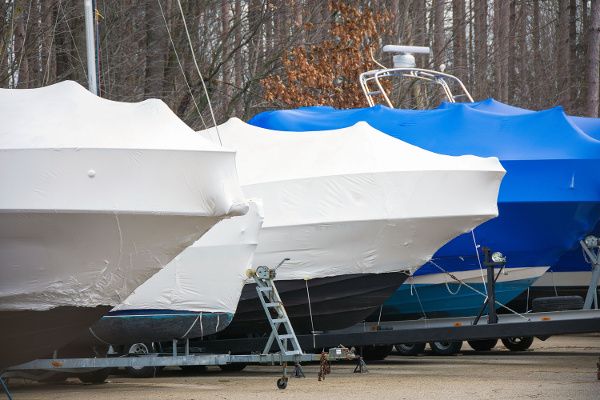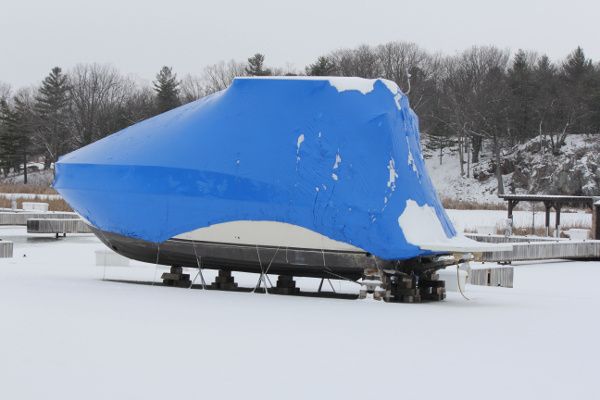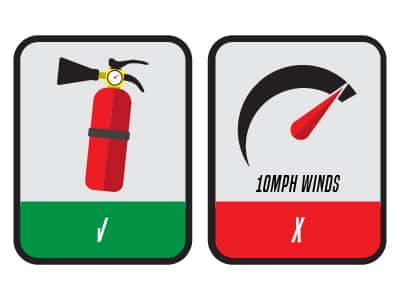Here’s Everything You Need to Know About Boat Shrink Wrap
 If you own a boat, you know it’s an investment. You do whatever you can to prevent buckling, scratches, and other damage, to avoid having to shell out for repairs. One of the best ways to keep out the elements and preserve your vessel is with boat shrink wrap.
If you own a boat, you know it’s an investment. You do whatever you can to prevent buckling, scratches, and other damage, to avoid having to shell out for repairs. One of the best ways to keep out the elements and preserve your vessel is with boat shrink wrap.
Unlimited Shrinkwrap provides shrink wrap services for a wide variety of items, including many large machines and vehicles. Since we’re located on the Chain O’Lakes, our most frequent type of project is boat shrink wrap. We wrap all kinds of boats, from personal watercrafts, to private yachts, to commercial vessels.
Boat shrink wrap involves covering the entire boat with shrink film, then applying heat to create a drum-tight seal that keeps it safe the elements. Let’s go into further detail about why boat shrink wrap is beneficial, when it’s appropriate, and how it’s applied and removed.
What Does Shrink Wrap Protect My Boat From?
Shrink wrap effectively shields your boat from a range of different elements. Normally, that includes things like sunlight, moisture, dust, dirt, rain, and pests. Winter creates additional conditions that can degrade the condition of your boat, especially here in the Midwest.

Let’s take a closer look at some of those elements that boat shrink wrap keeps out.
Heavy Rain, Flooding, and Blizzards
When blizzards sweep through in the winter, they deposit snow on everything in sight—including your boat. When spring comes, this snow melts and seeps into your boat, creating a foul mildew smell. More importantly, it can damage your electrical systems, requiring you to spend money on repairs. At other times of year, heavy rains can cause similar problems with flooding and water damage.
Boat shrink wrap provides a waterproof and airtight seal that will keep out all precipitation. This way, your boat stays clean and dry inside year-round.
Mold
Since your boat has so much contact with water, it can easily trap moisture. When that happens, there’s a good chance that you might uncover it in the spring only to find it full of mold. Not only does this mold look and smell unpleasant, but it can also release toxic spores. Breathing in those spores can result in throat irritation, coughing, wheezing, stuffy nose, eye irritation, or skin irritation. People who are allergic or more sensitive to the spores can even develop infections or lung disease.
Boat shrink wrap minimizes those health risks by establishing a waterproof and airtight seal that keeps out moisture and prevents mold from forming.
Find more information about how mold damages your boat and how shrink wrap prevents that here.
Wind, Dust, Debris, and Pests
Strong winds will blow dust, dirt, debris, and small pests in from neighboring areas. The last thing you want is to climb into your boat only to discover it full of freshly-hatched spiders, mites, centipedes, or some other nuisance. Even worse is the possibility of rats and other rodents taking shelter in your boat and forming nests in any openings or interior spaces they can reach.
Covering your boat in shrink wrap is a surefire way to keep out dust, dirt, debris, bugs, and rodents. The extra-thick industrial-grade shrink wrap material we use is extremely tough, and can withstand those pests trying to get through.
For more about the elements shrink wrap shields your boat from, see this infographic we made.
When Should I Shrink Wrap My Boat?
So, boat shrink wrap certainly provides a valuable degree of protection for the investment you’ve made in your boat. However, you can’t just keep your boat shrink wrapped all year when you’re trying to use it. When is it a good idea to shrink wrap your boat?
There are two main reasons you might want to apply boat shrink wrap: transporting your boat, and storing it for winter.
Transportation
If you’re putting your boat on a trailer and driving it to a storage unit, or even driving it to warmer waters for the winter, you want it to get there safe and sound. However, traveling across the country on an open trailer speeding down the highway isn’t the best of conditions for your boat. Wind and debris can cause you to lose or break pieces, and places with damp, salty air can cause corrosion if you don’t prepare.
Shrink wrapping your boat for transport will help ensure that your boat reaches its destination in the same condition it was in when you first left.
Winter
If you don’t properly winterize your boat, then come spring you may discover leaks, corrosion, fuel degradation, and damage to the piping and interior. These issues are typically not covered by your insurance policy because they’re considered a result of “lack of maintenance.”

After that, most boat owners typically throw a tarp over their boat and store it in an expensive storage facility. Instead, we recommend shrink wrap as a superior way to protect your boat. That way, you can even keep the vessel on your property all winter. Boat shrink wrap provides maximum protection all winter long while saving you money and labor getting your boat in and out of storage.
If you’re still considering putting your boat into storage, check out our guide to boat storage facilities and why you should still shrink wrap.
How Do I Shrink Wrap My Boat?
Every shrink wrap project is a bit different, depending on the dimensions of the boat and the space you’re working in. Boat shrink wrap can be applied indoors or outdoors, and typically requires a roll of shrink film, a heat gun, and posts for preparing a support structure, as well as a fire extinguisher in case of emergency.

- Follow Safety Precautions: Before you start shrink wrapping, you should make sure your boat doesn’t have a type of paint like IMRON or AWLGRIP which can potentially be damaged by the process. You should also make sure to keep a fire extinguisher on hand, and never shrink wrap in winds faster than 10mph, in case of burning material getting blown downwind.
- Prepare a Support Structure: Depending on the shape of your boat, you’ll need to design and create a substructure to hold up the shrink wrap. Place support posts on the deck, then thread straps through the top caps. The straps should extend from the front to the back, with additional side straps attaching to the side rails or cleats. Once these are tightened, you have a structure for the shrink wrap to sit on top of, contoured to allow rain and snow to slide off.
- Apply and Heat the Shrink Wrap: Finally, pull the shrink film over the boat directly off of the roll. Tuck add an additional 6” of material up under the perimeter band and trim away excess. Apply heat to weld the perimeter band and pleats, then heat the rest of the material in sweeping motions starting from the bottom.
- Allow Cooling and Install Vents: Let the material cool down, then tape up any holes you might’ve burned through the wrap. Finally, you can install vents and a zipper if necessary.
This is only a general summary, though. Every boat will require a different design for its support structure, and may require additional measures such as securing with twine. Not only that, but the heat guns and other equipment for a shrink wrap project can be expensive. That’s why we always recommend you get experts to do the job safely and professionally.
Here’s a more detailed guide to the shrink wrap process and why you should enlist an experienced contractor.
How Do I Remove Boat Shrink Wrap?
Once spring arrives, you’ll want to access the boat and get out on the water. Don’t rush this though—there’s plenty you should do before you launch your boat for the first time this spring. First, you’ll have to remove the shrink wrap so you can perform maintenance and get the boat ready.
Luckily, removing shrink wrap is a fairly easy process when you know what you’re doing. Simply pierce the wrap at the stern of the cockpit with a marlin spike, then cut from rear to front with a rigger’s knife. From there, place the rigger’s knife with the unsharpened back against the boat, and cut off one section of wrap at a time. Stay patient and be careful not to nick the boat’s finish.
Once that’s done, you’ll have plenty of other maintenance checks to run through before you can get you boat back on the water. Those include checking your electrical systems, your fuel system, your belts, hoses, and cables, and more.
For a more detailed review of how to remove shrink wrap and dewinterize your boat, read our guide here.
Contact Unlimited Shrinkwrap for All Your Boat Shrink Wrap Needs
If you’re considering using boat shrink wrap this year, it pays to have an experienced contractor on hand to make sure everything goes smoothly. Unlimited Shrinkwrap’s team of professionals has been shrink wrapping boats, cars, and other large objects for many years, and has the training and equipment to get your boat wrapped on-site within a couple hours.
For high-quality boat shrink wrap in McHenry, IL or elsewhere in northern Illinois, give Unlimited Shrinkwrap a call at 815-759-8944. We’ll make the process quick and painless for you, and keep your boat protected so that you can get on the water worry-free come springtime!
